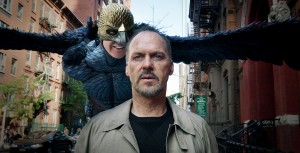Birdman Soars at 87th Academy Awards
February 23, 2015
The 87th Academy Awards were presented at the Dolby Theatre in Hollywood, California, last night. Award winners in some of the major categories included Birdman or (The Unexpected Virtue of Ignorance), which won for the best picture of the year. The film’s director, Mexico’s Alejandro G. Iñárritu, won the Oscar as best director. The film starred Michael Keaton as a washed-up superhero actor trying to revive his career by directing and starring in a Broadway play. British actor Eddie Redmayne won the Academy Award as best actor for his portrayal of the British theoretical physicist Stephen Hawking in the biographical picture The Theory of Everything. Julianne Moore received the Academy Award as best actress for her performance as a professor facing early-onset Alzheimer’s disease in Still Alice. J. K. Simmons won the best supporting actor Oscar for his portrayal of a sadistic jazz band instructor in Whiplash. The Academy Award for best supporting actress went to Patricia Arquette for her performance as a divorced mother trying to make a life for herself and her two children in Boyhood. Filmed over the course of 12 years, the film, directed by Richard Linklater, was notable for documenting the real-life aging of the actors in the film. Actor Neil Patrick Harris hosted the awards for the first time.

In a still photograph from the movie Birdman, Michael Keaton plays an actor shadowed by the superhero character he once played. (Credit: © Fox)
The Academy Awards are supervised by the Academy of Motion Picture Arts and Sciences, with headquarters in Beverly Hills, California. Last evening’s broadcast reached viewers in more than 100 countries. But the original ceremony on May 16, 1929, was a small affair attended by only 270 guests at the Hollywood Roosevelt Hotel, at $5 a ticket. Unlike the highly anticipated event it is today, the first ceremony held little suspense when the awards were presented, as the winners had been announced three months earlier. In 1930, the Academy kept the results secret until the ceremony, but it gave a list in advance to newspapers for publication at 11 p.m. on the night of the awards. This policy continued until 1940, when the Los Angeles Times published the names of the winners ahead of the ceremony in its evening edition. In 1941, the Academy adopted the sealed-envelope system that is still in use today. In 1953, the Oscar ceremony was televised for the first time, reaching millions of viewers in Canada and the United States. Since 1969, the ceremony has been broadcast internationally.
Other World Book articles:
- See also Back in time articles for Motion picture from 1922 through 2014


